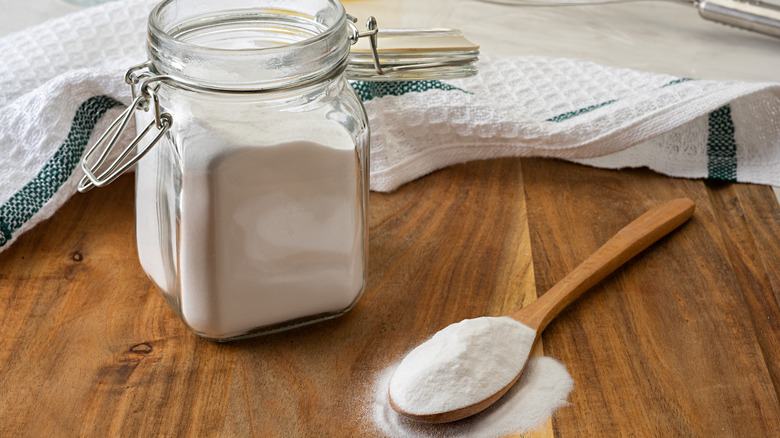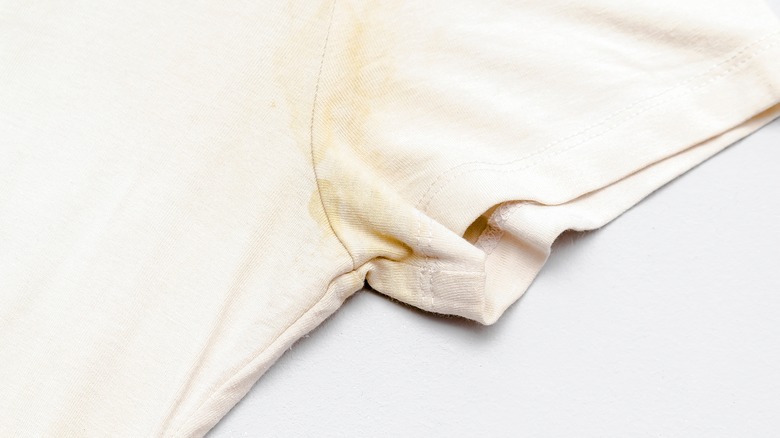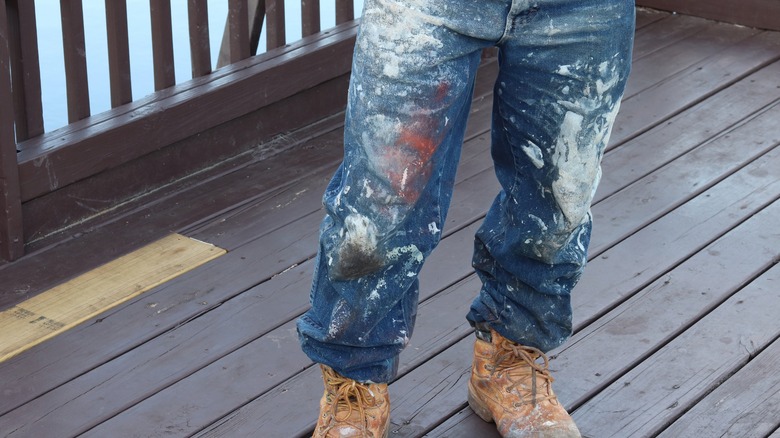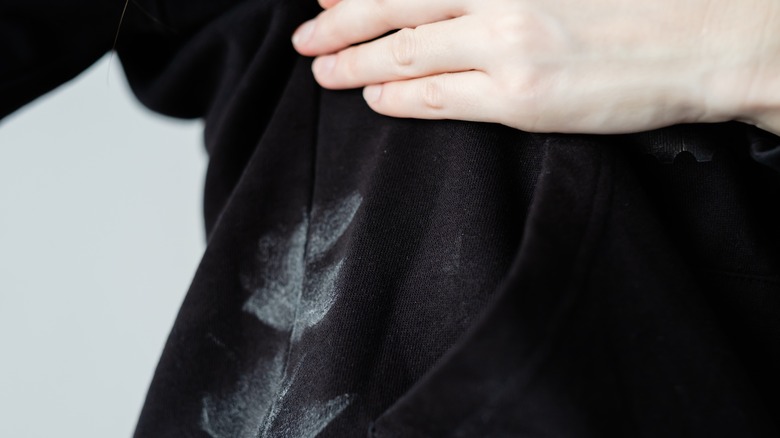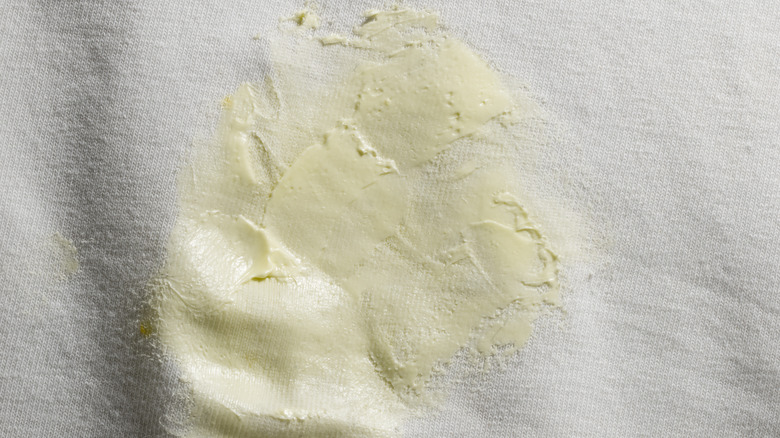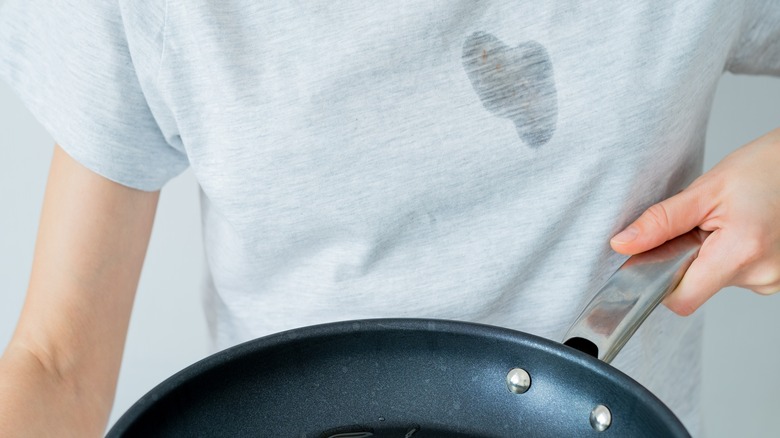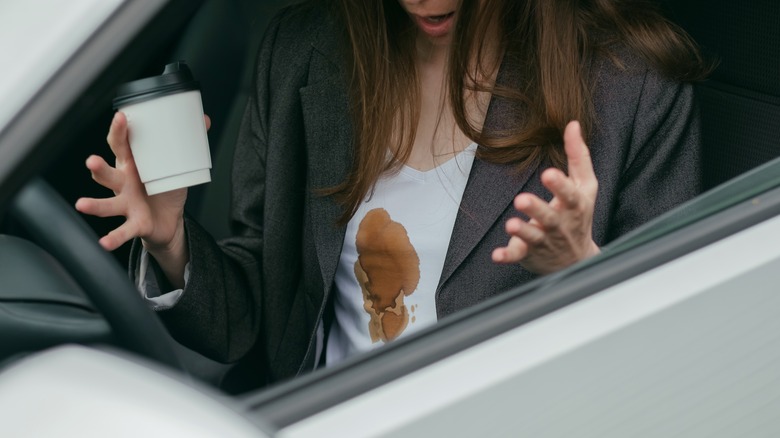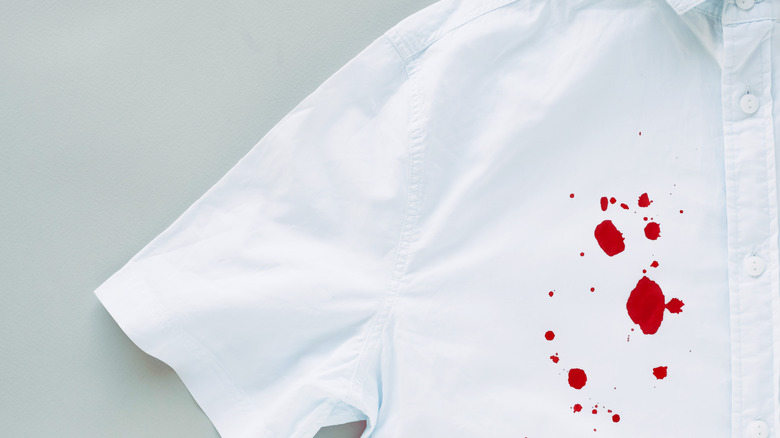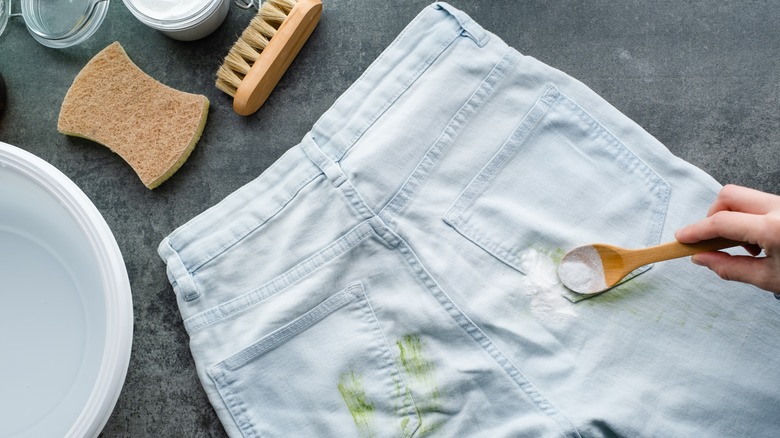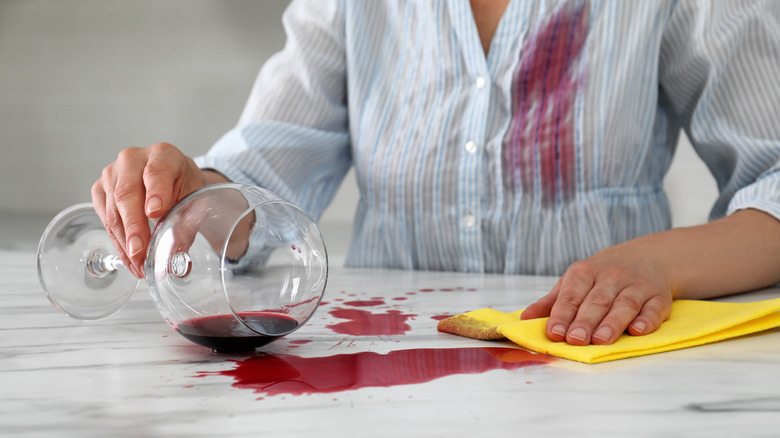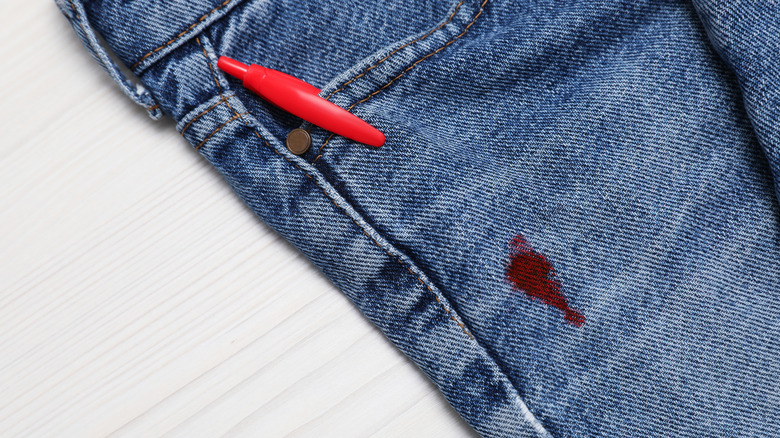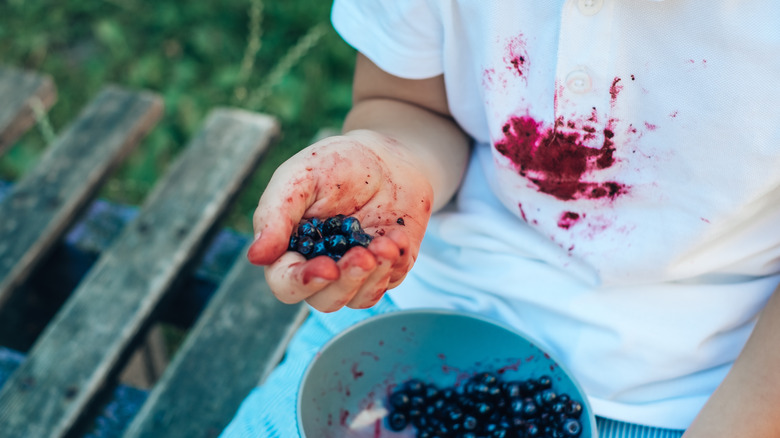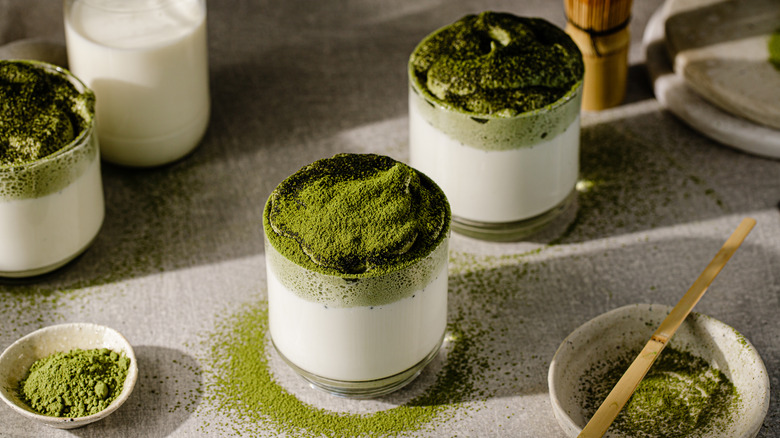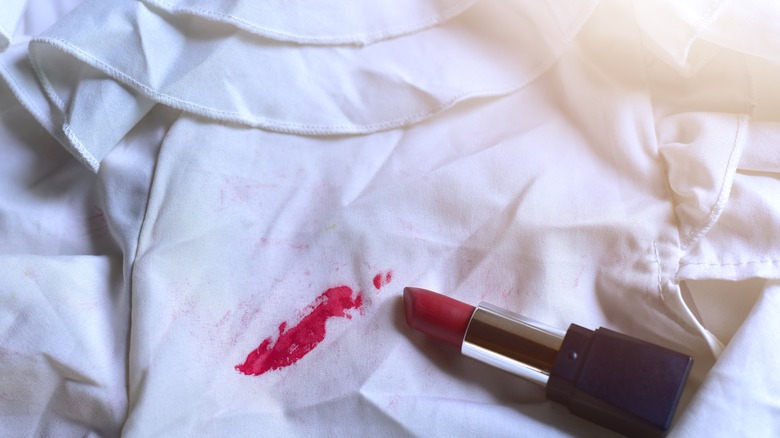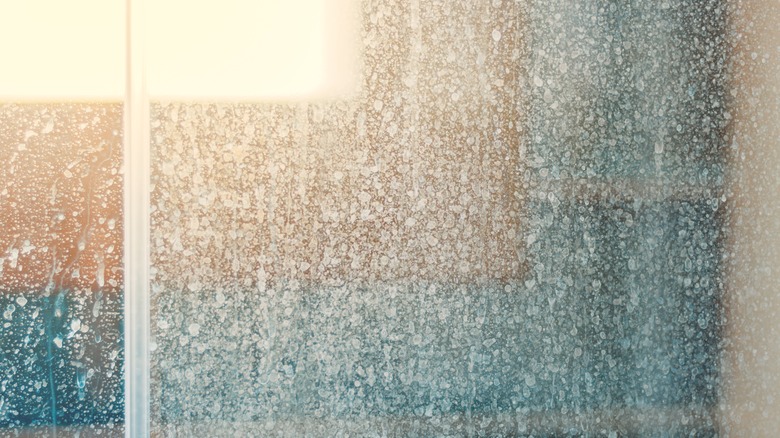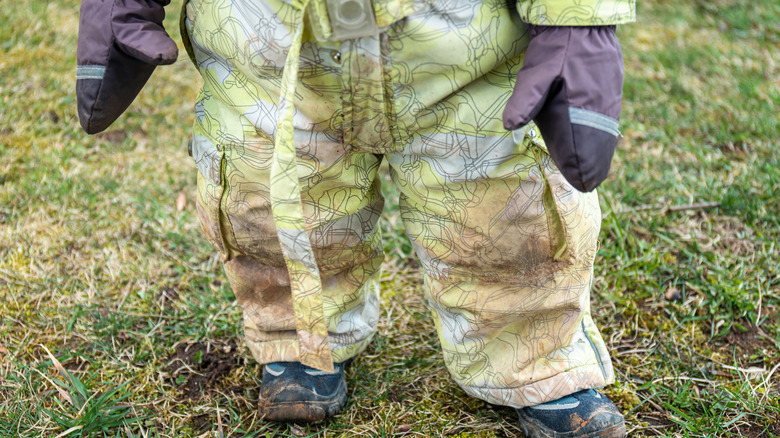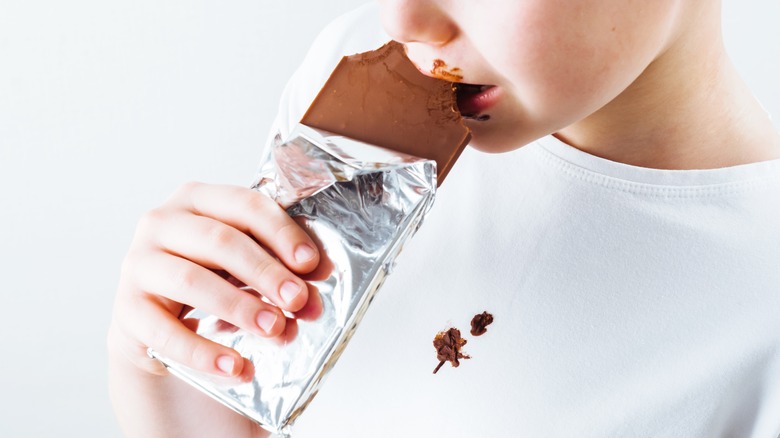15 Stubborn Stains Baking Soda Can Banish From Your Laundry (& One It Can't)
We may receive a commission on purchases made from links.
Laundry stains can happen to even the tidiest of us. An accident in the car with your morning coffee or matcha latte, grass stains from a tumble in the yard, or maybe an untrustworthy ballpoint pen leaked in your shirt pocket — whatever the reason, clothing stains are inevitable. Fortunately, not every blemish means the garment is a lost cause, or that you need to pay a hefty dry cleaning bill. Before you panic, you can try enlisting the help of baking soda to remove many different types of stains from your laundry, like lipstick, coffee, ink, and more.
Baking soda is effective for treating many stains when you turn it into a paste mixed with water and then either rub or brush it into the stained fabric. While the mixture soaks into the garment, the alkalinity of the baking soda works its magic by breaking down the stain and lifting it out of the fabric. You can let the paste sit anywhere from a few minutes up to overnight — the worse the stain is, the longer you might want to pretreat it with baking soda before placing it into the wash. For other stains, a generous sprinkling of baking soda atop the stain can get the job done.
Sweat marks
Sweating is a natural bodily function, and it's nothing to be ashamed of. However, sweat stains on your clothes can be frustrating, and maybe even a little embarrassing. Especially when they won't wash out and are in visible areas like the armpits of your shirt or top of your hat. To remove unpleasant sweat stains, create a paste with baking soda and water and gently rub or brush it onto the stain. Let it soak for about 20 minutes, rinse the paste off with cold water, and then wash your clothes as normal.
Paint splatters
Paint stains on your clothes, sheets, or blankets are not ideal. However, baking soda can help you banish paint stains from your laundry. Your approach will differ depending on if the paint stain is from an oil-based or water-based paint. If you're dealing with an oil paint stain, you'll want to soak it in a combination of 2 tablespoons of baking soda with 1 cup of boiling water. If it is from a water-based mixture, a simple paste of baking soda and cold water either rubbed or brushed into the mark should suffice.
Chalky deodorant marks
Unlike sweat stains which come from natural bodily secretions, deodorant stains come from the aluminum salts in your antiperspirant stick. This can leave undesirable white marks on the armpits of your garments. There are a lot of easy ways to remove stubborn deodorant stains from your laundry, including attacking the stain with baking soda. To make it work, you'll want to create a paste out of water and baking soda. Then, use a toothbrush and massage the paste into the stain.Allow the paste to fully dry, and wash your clothes like you typically would.
Smeared butter
Butter may seem like an innocent kitchen ingredient, but when it comes into contact with your clothes, it can leave a big, unwanted stain. Luckily, baking soda works wonders at removing pesky butter stains from your beloved garments First, remove any excess butter from the garment, and try to avoid rubbing it in any further. Then, cover the stain in baking powder, and let it get to work absorbing the butter from the fabric. Leave the powder on the stain for, at minimum a few hours, and preferably until the next day. After, wash the fabric like usual.
Stubborn oil and grease stains
Oil and grease are some of the most nefarious laundry stains. All it takes is a pop of cooking oil in the kitchen or brushing up against an old bicycle chain, and tragedy can strike — in the form of a dark stain. Since they're hydrophobic, water isn't going to help you lift these stains, but baking soda can! After blotting out any excess grease with a towel, cover the grease stain in baking soda and let it sit for a few minutes. Then, you can shake off the baking soda, and toss it in the wash.
Coffee stains
The irony of coffee stains is that they often happen while we're at our groggiest, and when we haven't finished our coffee yet! This is also probably why they're one of the most common types of stains. To help remove the coffee stain, first try to soak up any remaining liquid with a wet cloth or paper towel. After, sprinkle some baking soda over the stain and let it sit. Then, wipe the baking soda off and get your clothes in the wash. If possible, try to address the coffee stain quickly to keep it from setting.
Blood stains
Bloody noses, falls on the playground, and other accidents can cause blood stains. These are some of the hardest to remove, and you should only use cold water when trying to remove blood stains, as hot water can cause them to permanently set into fabric. After thoroughly rinsing the stain in cold water, apply a baking soda paste to the area using a 2:1 ratio of baking soda to water. Let the paste sit for about a half hour, gently dab at it with a wet cloth, and then if the stain is gone, wash it as normal.
Grass marks
Baking soda is an excellent natural solution for helping to lift grass stains from most fabrics.To tackle grass stains with baking soda, you'll want to make a 3:1 paste of baking soda to water.Cover the stain with the paste, and then gently rub it in with a laundry stain brush from Amazon for $14. After leaving it for a minimum of 15 minutes, you can try washing the item like usual. If the stain is still there after a wash cycle, hit it again with baking soda before drying to keep the stain from setting.
Red wine marks
The combination of easily tippable glasses and the diminished coordination that often accompanies enjoying a glass or two of vino can create the perfect storm for red wine stains. These types of stains can be tricky to remove once they've set in, but if you address them early, you can remove red wine from fabrics with the help of a little baking soda. Mix a 1:3 ratio of baking soda to water, cover the stain with the mixture, and once it's dried, shake off the paste and wash your garment.
Ink splotches
A leaky pen in your pocket is all it takes for pesky ink stains to occur, leaving your favorite threads with big colored blotches. Despite the daunting appearance of ink stains, with the help of baking soda, you should be able to save your clothes. Simply create a paste of baking soda and water to cover the stain, and begin gently blotting at the mark with a cotton ball. Continue this until there is no more ink coming off of the fabric, and then you can launder the garment with warm water.
Berry stains
Sweet and delicious berries receive their vibrant hues from natural pigments called anthocyanins. Along with giving berries their colors, these pigments can also stain fabrics.If berry juice comes into contact with your clothes, a paste of water and baking soda can help lift the stain out of the fabric.After about 20 minutes, be sure to rinse the garment well with cool water before you toss it in the wash and allow it to go through a normal cycle.
Matcha splatters
Matcha spills can lead to rich, green marks on your clothes, which can stain if they set in. Quick action is paramount for getting these stains out. First, blot at the stain with a damp, cool towel. Then, you can apply a thick, 1:1 paste of baking soda and water to the stain. Leave the paste on the stain for about a half hour, and then rinse it all out using cold water.When dealing with dried matcha stains, you can try to lift the stain by soaking it with cold water before you use the baking soda.
Lipstick smudges
Lipstick is scientifically engineered with pigments, oils, and binders that make it stay put on your lips all day long. For that very reason, lipstick can cause some pretty serious stains when it's smudged against your clothes.If you find yourself struggling to remove lipstick from fabric, you can cover the stain in a thick paste of baking soda and lemon juice. After you've let the paste sit on the stain for about 15 minutes, you can then gently rub it in with a toothbrush or fabric brush. Then, flush the garment with cold water and repeat if necessary.
Water stains
Minerals in water like potassium and calcium can dry out and leave stains in areas where water has spilled and then evaporated.While wiping away water spills quickly is the best way to avoid water stains, if it's too late for that, you can apply a paste of baking soda and water to the stain, let it sit, and then rinse it out with warm water. A paste of baking soda and vinegar can also work to remove water stains on fabric, but you should test it out on a small patch of the fabric to make sure it doesn't cause further discoloration.
Caked-in mud
While mud stains don't usually stick around forever, heavy duty ones are capable of leaving marks on your clothes for the long term. Especially if you throw the garment in the dryer without getting the stain out completely. To prevent this from happening, you can mix a paste of baking soda and water and apply it to any spots on your clothes that are particularly dirty. Feel free to let the paste sit on the stain overnight before you throw your clothes in the wash for maximum results.
Do not use baking soda on chocolate stains
Although there are various types of stains baking soda can lift, there's a particular type of substance you definitely do not want to use baking soda on— chocolate. The composition of chocolate contains minerals that can react with the baking soda, making it even more difficult to remove.Rather than using baking soda to remove pesky chocolate stains, you should instead treat the chocolate marks with an enzymatic stain remover, let it sit, and then wash the garment.
